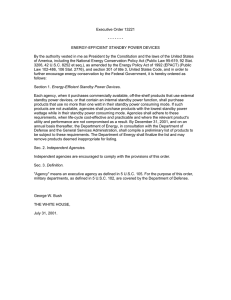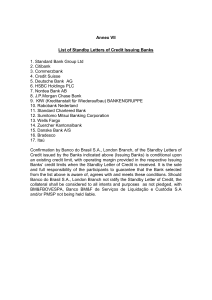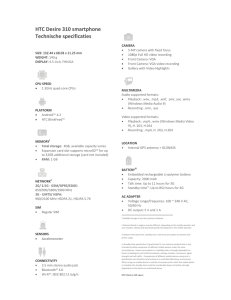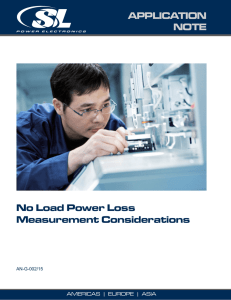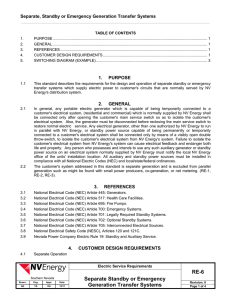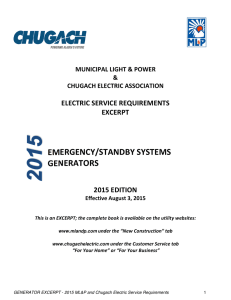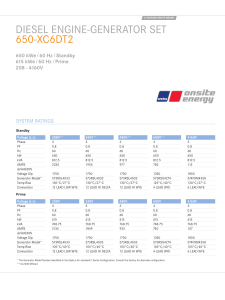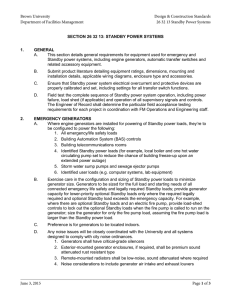What are the differences between Emergency, Standby and Prime
advertisement
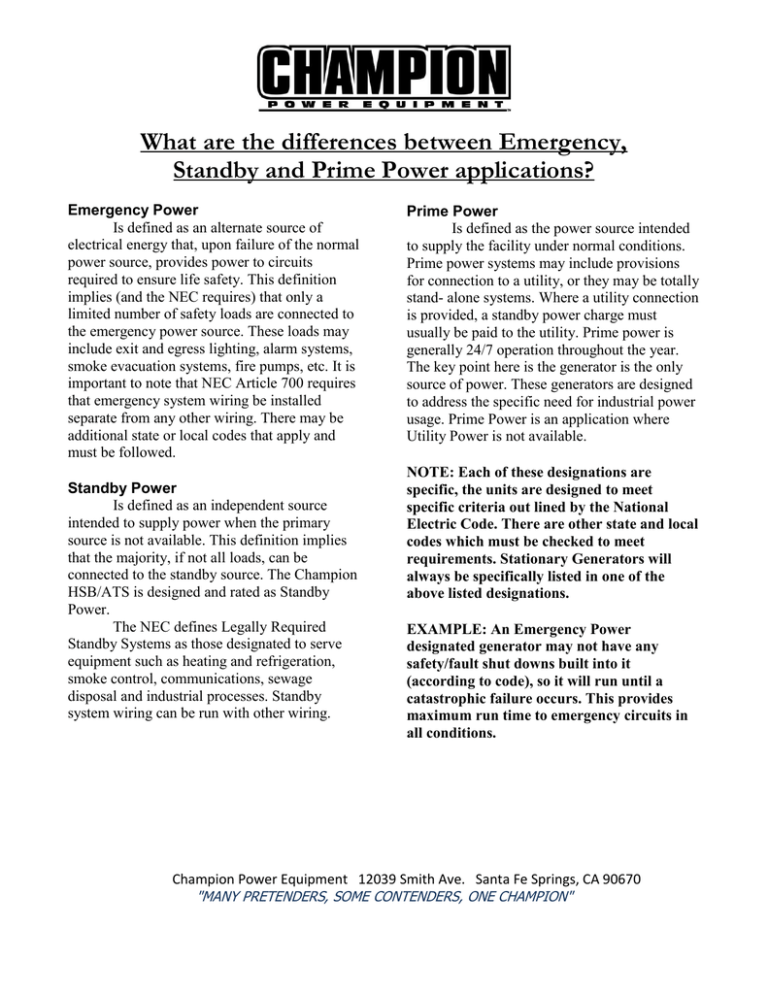
What are the differences between Emergency, Standby and Prime Power applications? Emergency Power Is defined as an alternate source of electrical energy that, upon failure of the normal power source, provides power to circuits required to ensure life safety. This definition implies (and the NEC requires) that only a limited number of safety loads are connected to the emergency power source. These loads may include exit and egress lighting, alarm systems, smoke evacuation systems, fire pumps, etc. It is important to note that NEC Article 700 requires that emergency system wiring be installed separate from any other wiring. There may be additional state or local codes that apply and must be followed. Standby Power Is defined as an independent source intended to supply power when the primary source is not available. This definition implies that the majority, if not all loads, can be connected to the standby source. The Champion HSB/ATS is designed and rated as Standby Power. The NEC defines Legally Required Standby Systems as those designated to serve equipment such as heating and refrigeration, smoke control, communications, sewage disposal and industrial processes. Standby system wiring can be run with other wiring. Prime Power Is defined as the power source intended to supply the facility under normal conditions. Prime power systems may include provisions for connection to a utility, or they may be totally stand- alone systems. Where a utility connection is provided, a standby power charge must usually be paid to the utility. Prime power is generally 24/7 operation throughout the year. The key point here is the generator is the only source of power. These generators are designed to address the specific need for industrial power usage. Prime Power is an application where Utility Power is not available. NOTE: Each of these designations are specific, the units are designed to meet specific criteria out lined by the National Electric Code. There are other state and local codes which must be checked to meet requirements. Stationary Generators will always be specifically listed in one of the above listed designations. EXAMPLE: An Emergency Power designated generator may not have any safety/fault shut downs built into it (according to code), so it will run until a catastrophic failure occurs. This provides maximum run time to emergency circuits in all conditions. Champion Power Equipment 12039 Smith Ave. Santa Fe Springs, CA 90670 "MANY PRETENDERS, SOME CONTENDERS, ONE CHAMPION"
